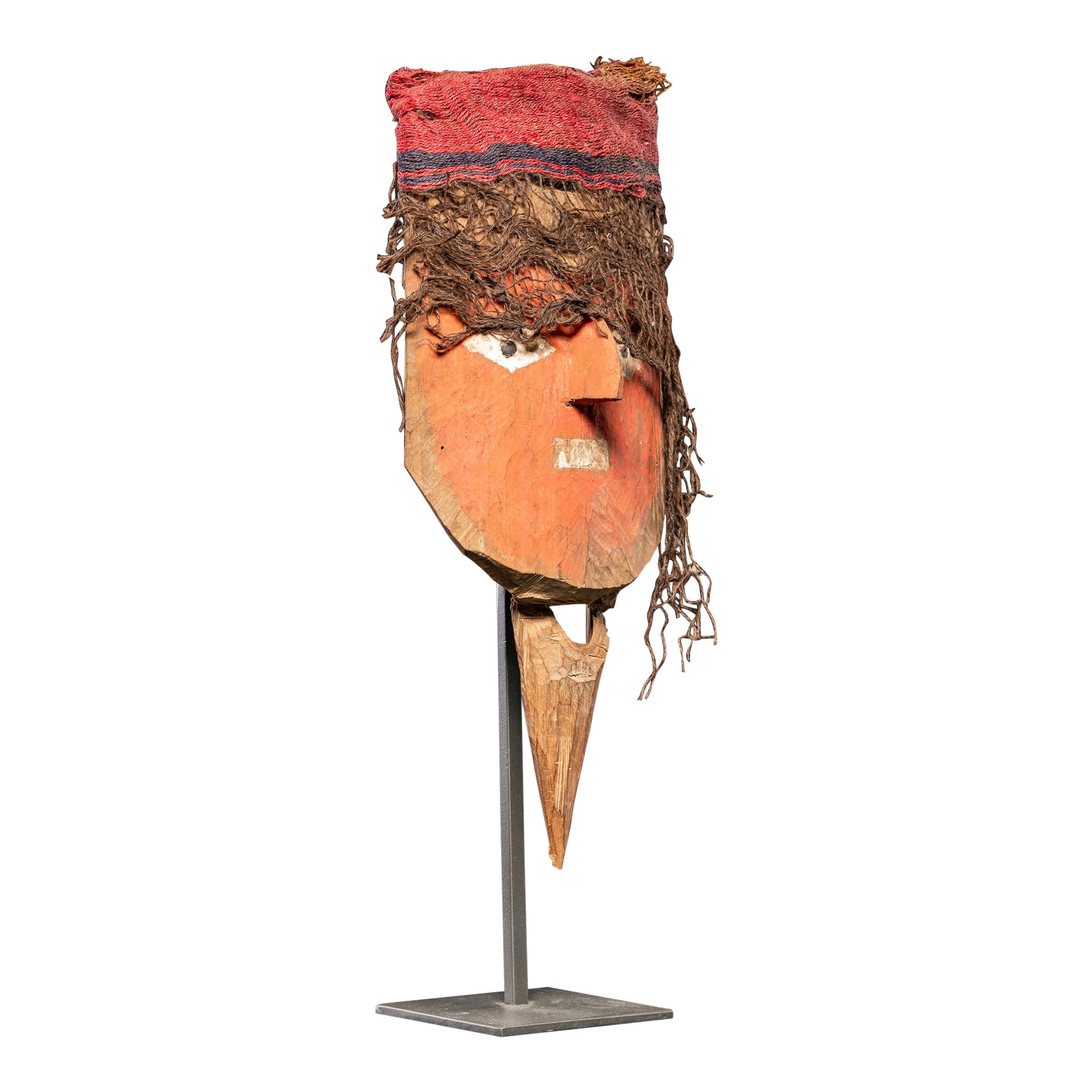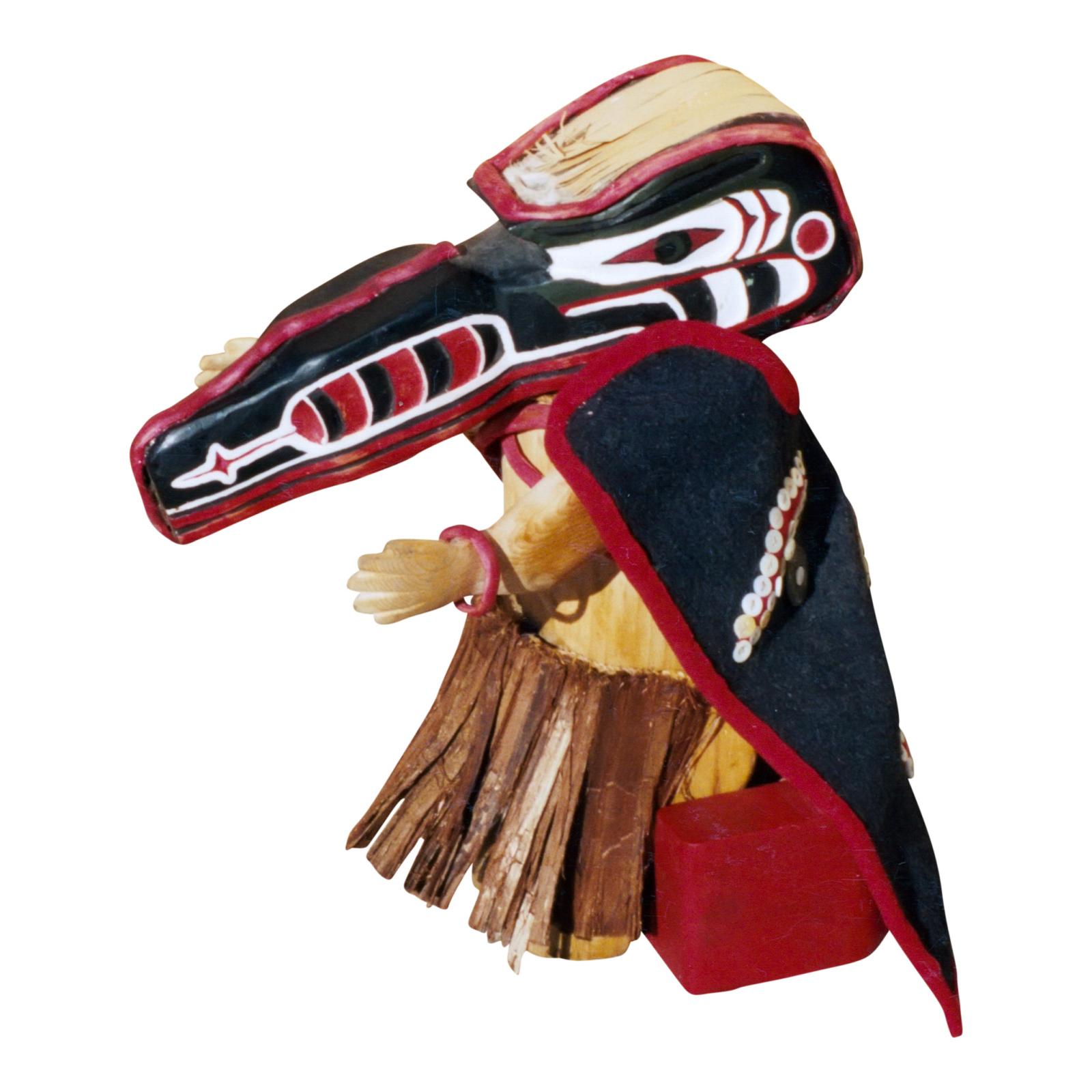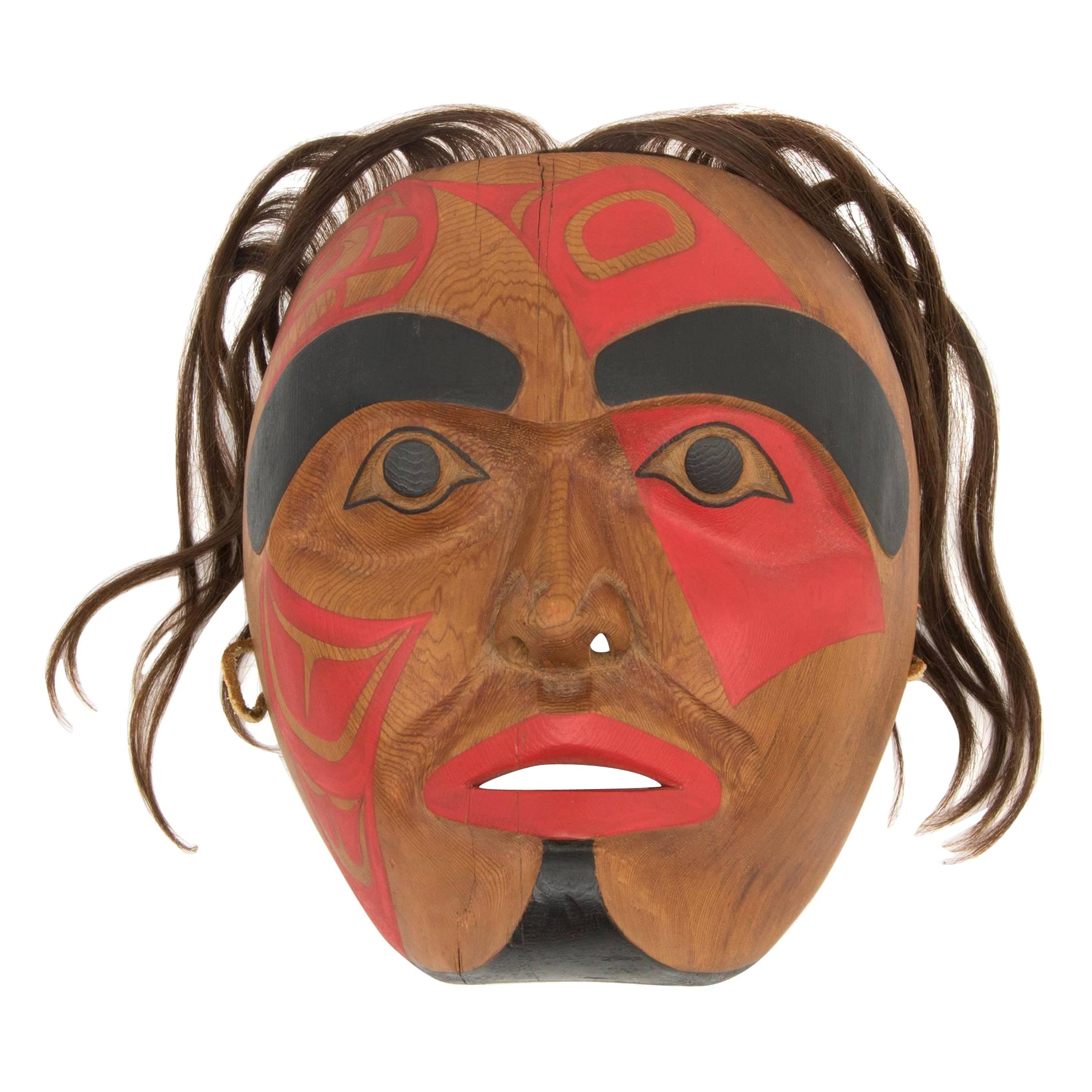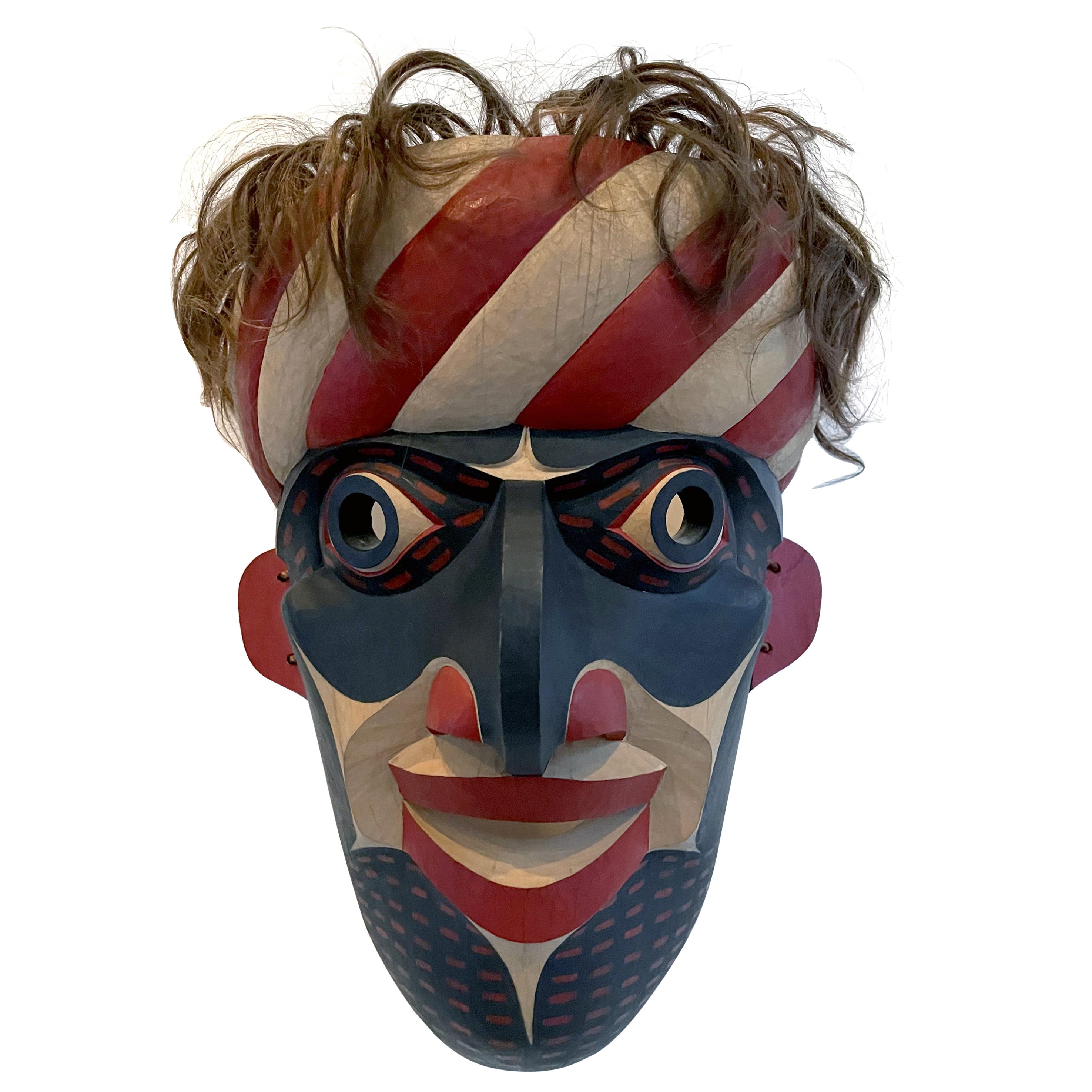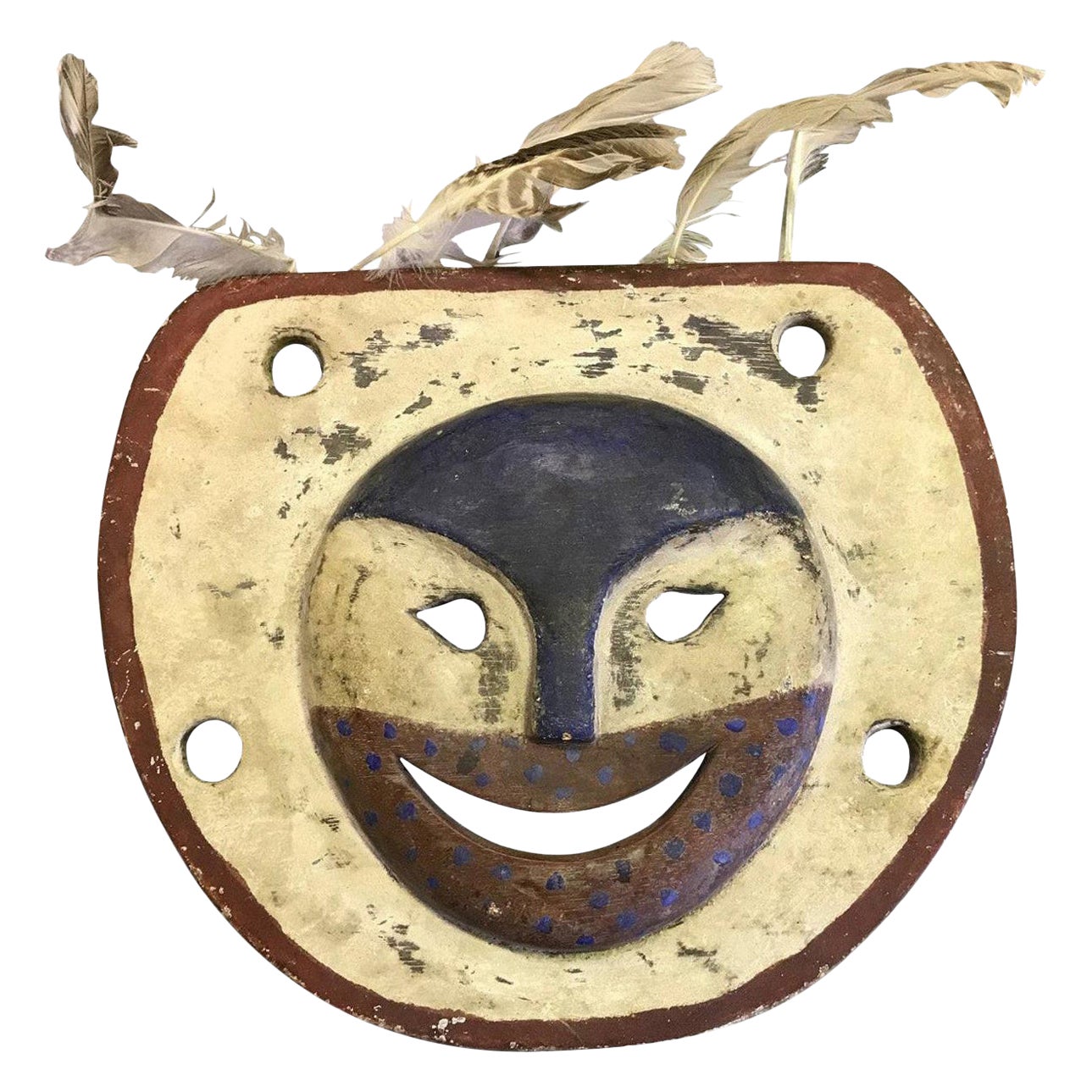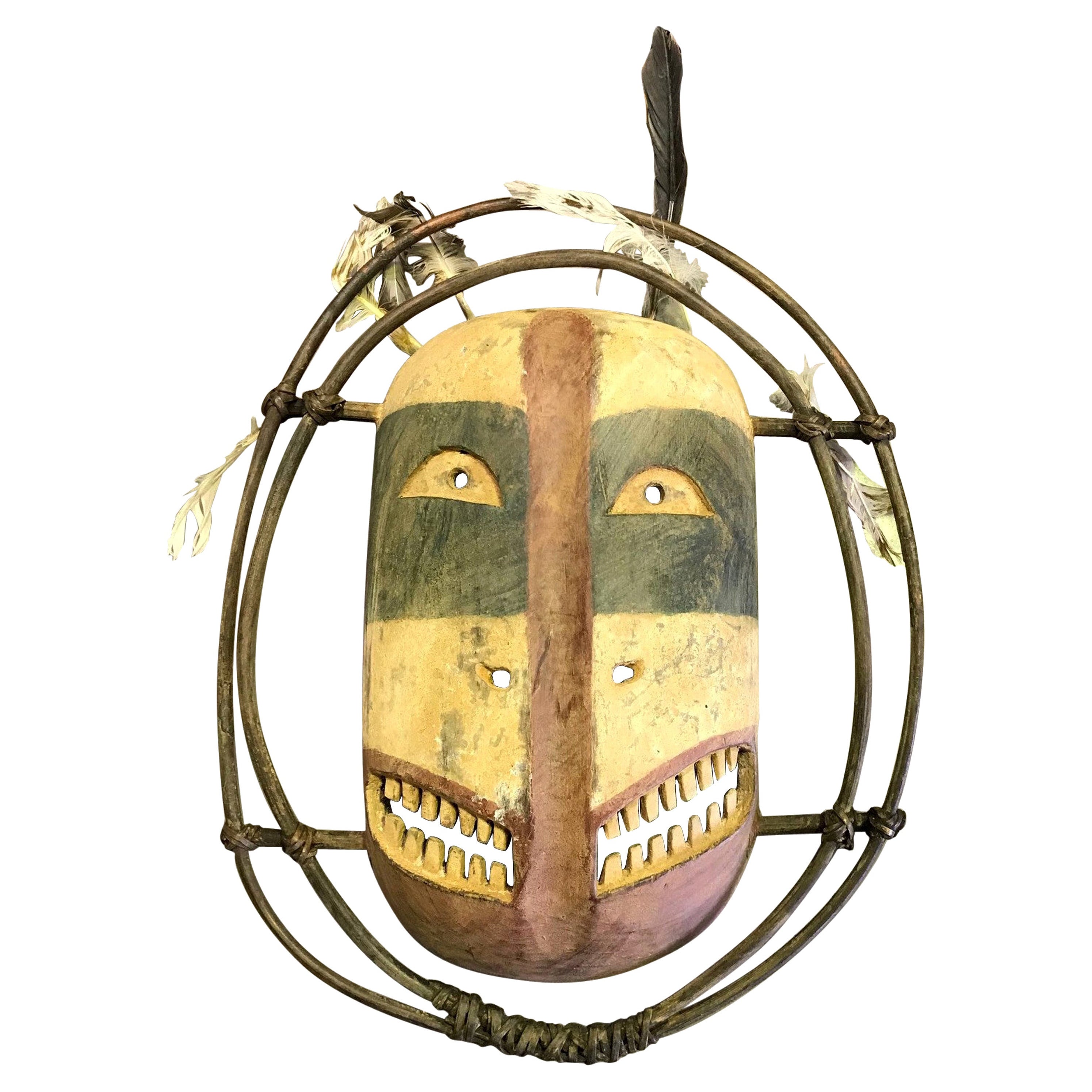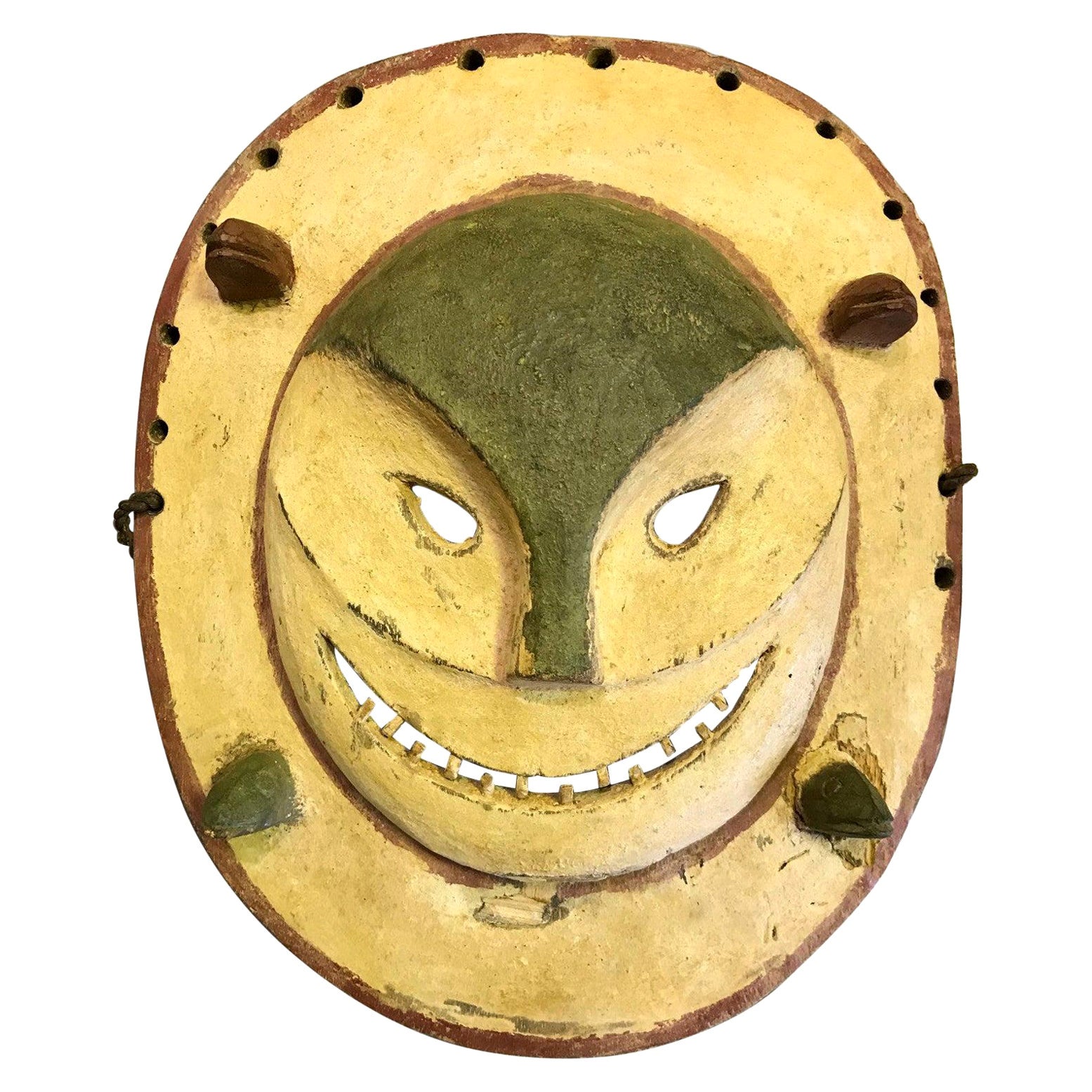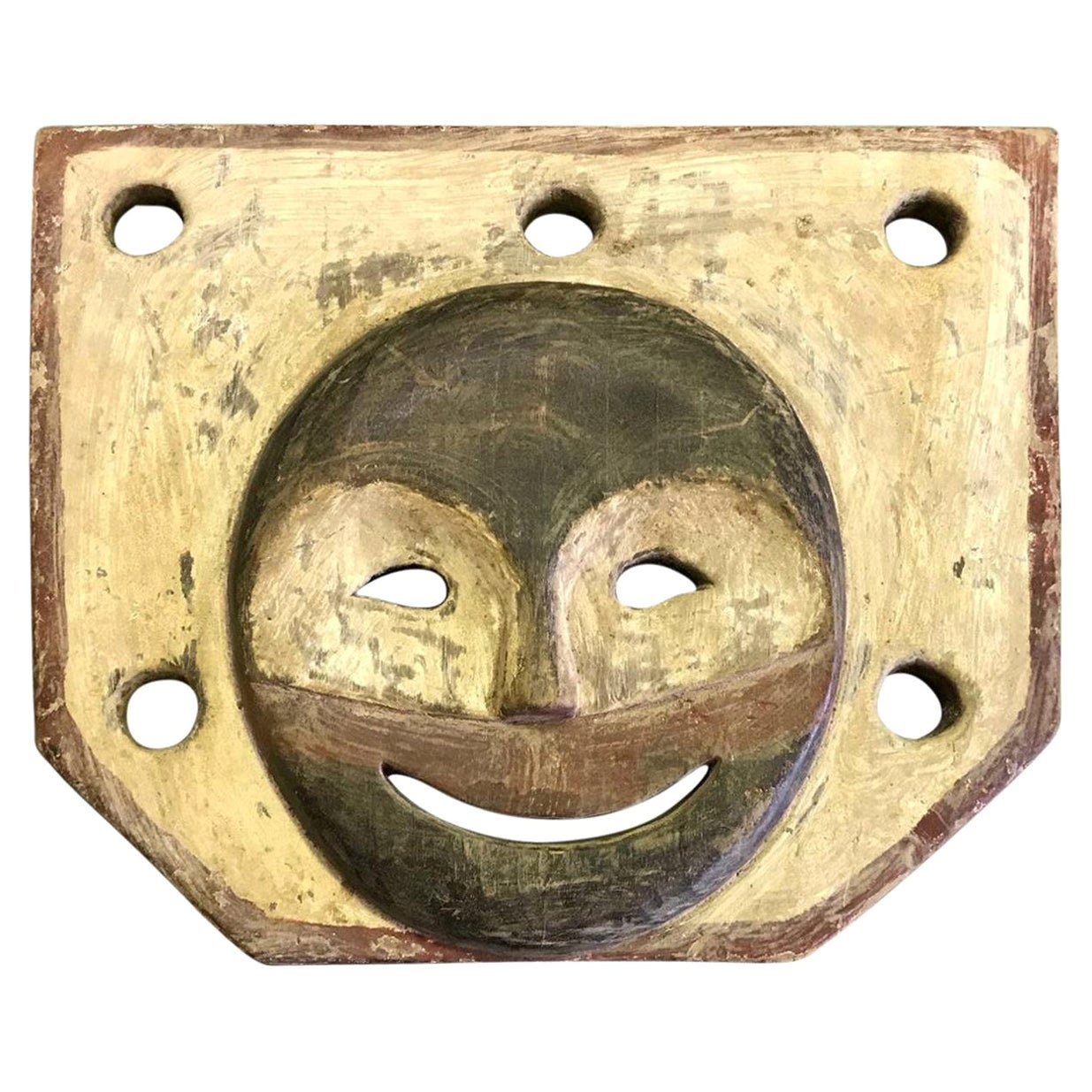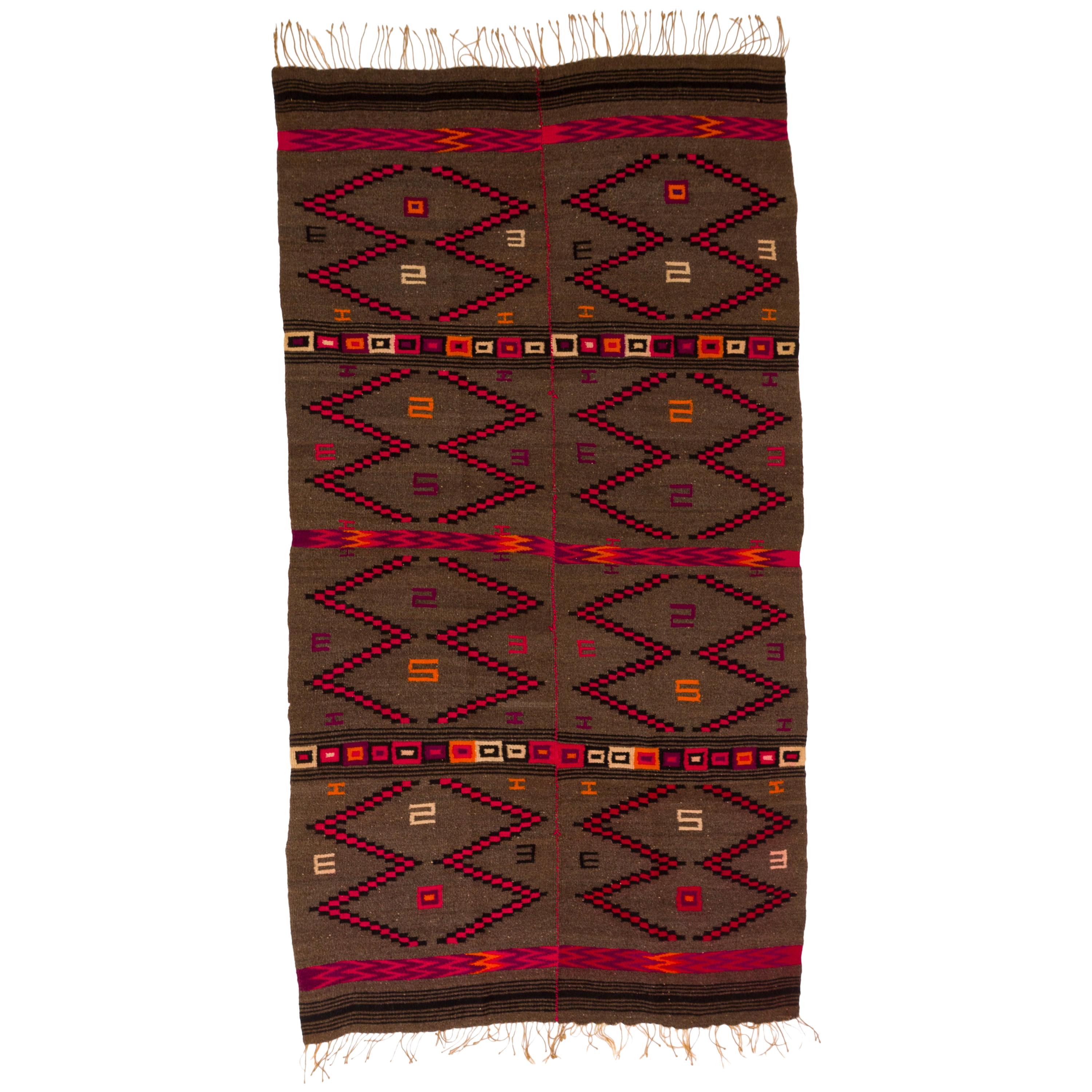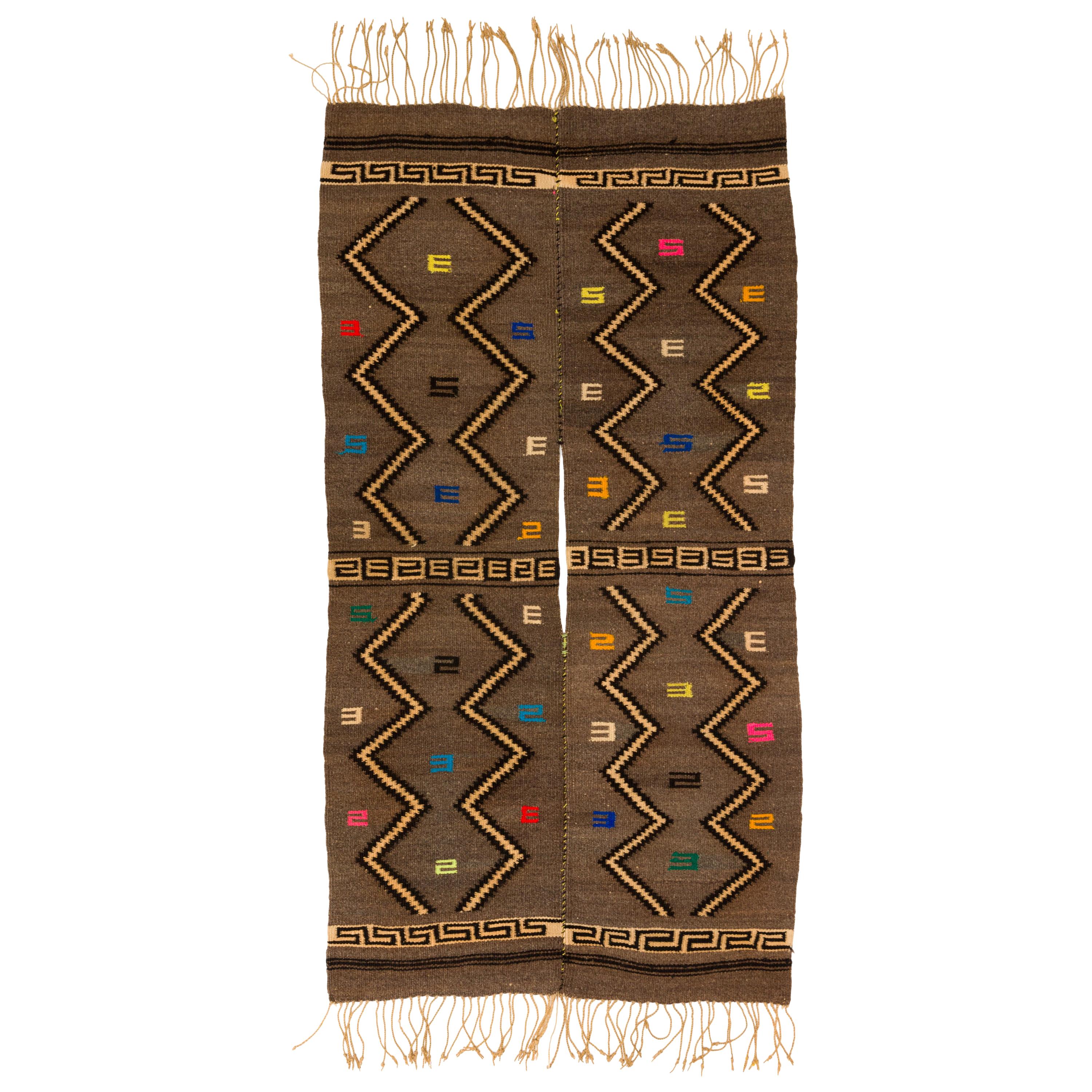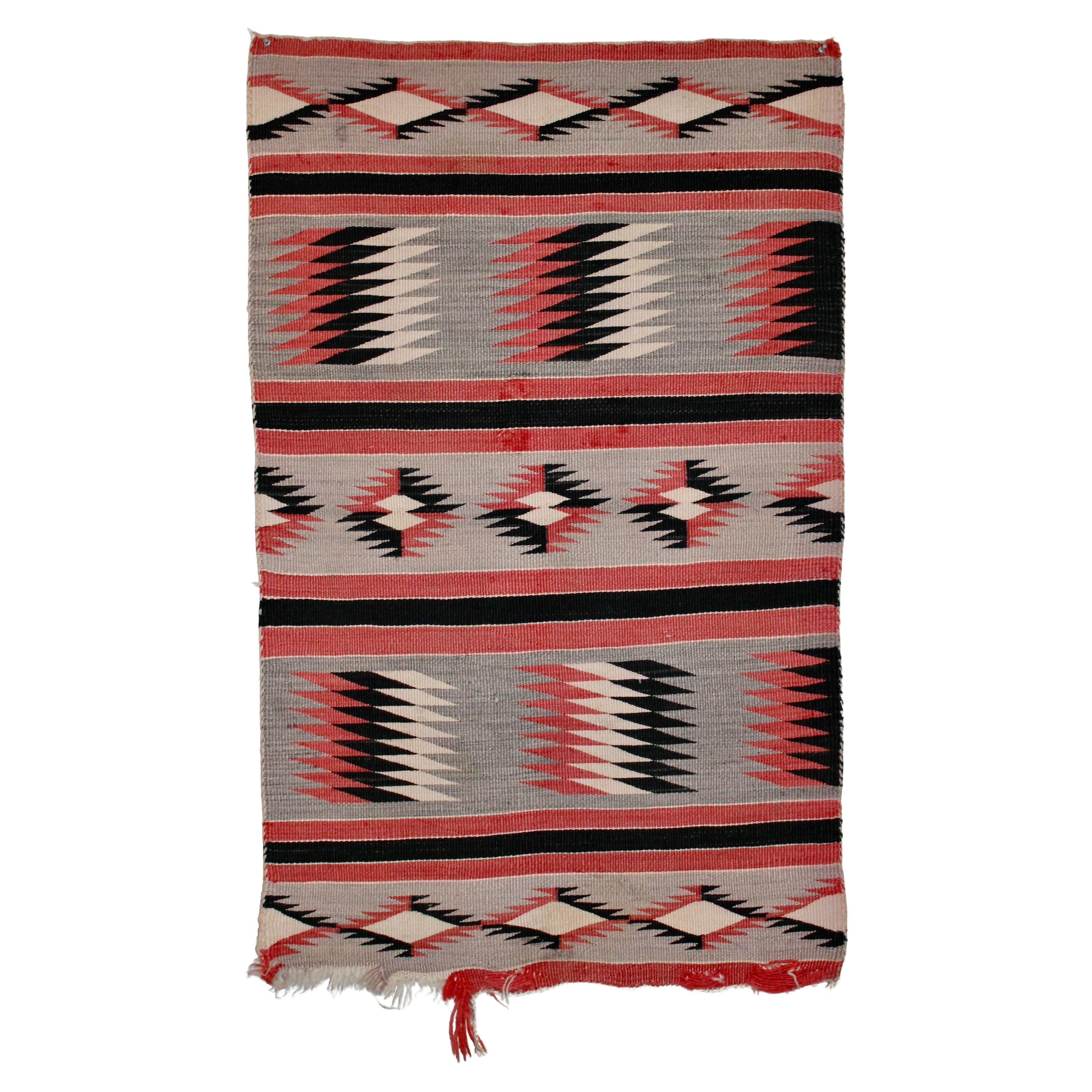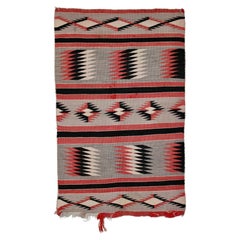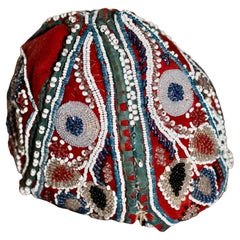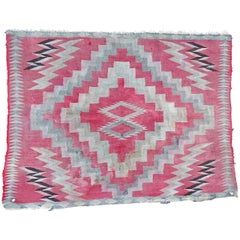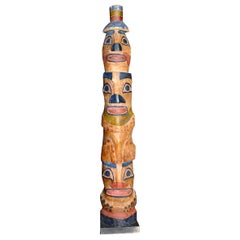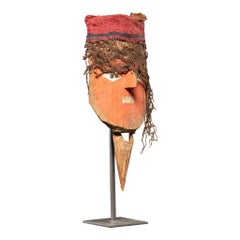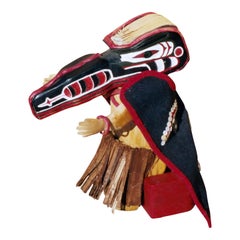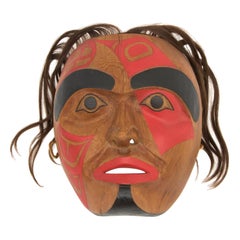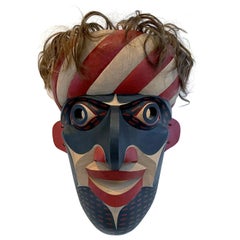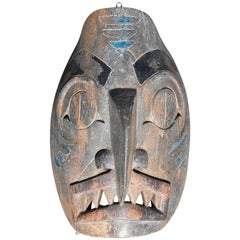
Tony Hunt Jr. Kwakiutl Mask
View Similar Items
Want more images or videos?
Request additional images or videos from the seller
1 of 9
Tony Hunt Jr. Kwakiutl Mask
Price:$600
$950List Price
About the Item
- Creator:Tony Hunt Jr. (Artist)
- Dimensions:Height: 10.75 in (27.31 cm)Width: 7 in (17.78 cm)Depth: 6 in (15.24 cm)
- Style:Tribal (In the Style Of)
- Materials and Techniques:
- Place of Origin:
- Period:
- Date of Manufacture:circa 1990
- Condition:Wear consistent with age and use. losses to surface paint.
- Seller Location:Sharon, CT
- Reference Number:1stDibs: LU3438310415803
About the Seller
4.8
Platinum Seller
Premium sellers with a 4.7+ rating and 24-hour response times
Established in 2013
1stDibs seller since 2018
223 sales on 1stDibs
Typical response time: 5 hours
Authenticity Guarantee
In the unlikely event there’s an issue with an item’s authenticity, contact us within 1 year for a full refund. DetailsMoney-Back Guarantee
If your item is not as described, is damaged in transit, or does not arrive, contact us within 7 days for a full refund. Details24-Hour Cancellation
You have a 24-hour grace period in which to reconsider your purchase, with no questions asked.Vetted Professional Sellers
Our world-class sellers must adhere to strict standards for service and quality, maintaining the integrity of our listings.Price-Match Guarantee
If you find that a seller listed the same item for a lower price elsewhere, we�’ll match it.Trusted Global Delivery
Our best-in-class carrier network provides specialized shipping options worldwide, including custom delivery.More From This Seller
View AllNavajo Child's Blanket
By Navajo Indian Art
Located in Sharon, CT
A late classic small (child's) blanket.
Category
Antique 1880s American Tribal Native American Objects
Materials
Wool
$2,000
Iroquois (Haudenosaunee) Beaded Child's Cap
By Iroquois
Located in Sharon, CT
An Iroquois child's cap, beautiful floral designs in multi-colored beads woven on red fabric.
Category
Antique Late 19th Century American Tribal Native American Objects
Materials
Beads
Navajo Germantown Saddle Blanket
Located in Sharon, CT
Finely woven small blanket.
Category
Antique Late 19th Century American Navajo Native American Objects
Materials
Wool
Totem Pole Model Nootka, Northwest Coast
Located in Sharon, CT
Rare, good sized Totem Model. Untouched, original non commercial paint.
Category
Antique Late 19th Century American Native American Native American Objects
Materials
Wood
Navajo Child's Blanket
Located in Sharon, CT
An early blanket.
Category
Antique Late 19th Century American Navajo Native American Objects
Materials
Wool
$1,000
Paqua First Frogwoman Naha 1890-1955 Hopi Bowl
By Frogwoman
Located in Sharon, CT
Important early signed Hopi Bowl by 'First Frogwoman'.
Category
Early 20th Century American Native American Native American Objects
Materials
Pottery
You May Also Like
Chancay original Mummy Bundle Mask
Located in Leuven , BE
A hand-carved funerary mask meant to attach to a larger mummy bundle. The plank-form mask is painted with a broad red face accented with white, diamond-shaped eyes, a rectangular mou...
Category
Antique Late 19th Century Peruvian Native American Objects
Materials
Textile, Wood
Northwest Coast Wooden Doll with Thunderbird, Eagle Mask
Located in Coeur d'Alene, ID
Seated figure with Thunderbird mask; carved yellow cedar, Thunderbird mask (eagle) depicted as head on a seated human body. Arms are dramatically open and outstretched. Large, richly detailed Thunderbird Mask, permanently attached with oblong eyes painted red, black and white. Edge decorated with dyed (red) spruce root as simulated mask harness over shoulders and across the chest. Dance apron; Seated figure wearing an apron of shredded cedar bark. Held on to figure at the waist with woven cedar string and abalone shell on button at back. Approximately 7" wide/long by 4" high. Bench; carved from cedar. Decorated on the back with bear face, outlined with inlaid red dyed spruce root. Ears, eyebrows and nose of inlaid abalone shell. Eyes of inlaid fossilized ivory...
Category
Vintage 1920s American Native American Native American Objects
Materials
Cedar
Signed Northwest Coast Killer Whale Mask, Attributed to Johnny Johns
Located in Denver, CO
This striking hand-carved wooden mask from the Pacific Northwest Coast powerfully embodies the rich artistic traditions and cultural symbolism of Indigenous coastal peoples. Featurin...
Category
Mid-20th Century American Native American Tribal Art
Materials
Bentwood, Wood
Carved Tribal Mask from Pacific Northwest Coast by David Frankel
Located in Atlanta, GA
A striking carved and painted mask in the tradition of the Native Indian tribes from Pacific Northwest Coast by David Frankel in 1994. The mask...
Category
1990s American Native American Masks
Materials
Natural Fiber, Wood
Yupik Yup'ik Native American Alaska Polychrome Wood Anthropomorphic Spirit Mask
Located in Studio City, CA
A beautiful, somewhat benevolent mask by the Yup'ik (Yupik) aboriginal, indigenous people of South-Western & South Central Alaska. The Yup'ik people, who are related to the Inuit peo...
Category
20th Century American Masks
Materials
Wood, Paint
Yupik Yup'ik Native American Alaska Carved Polychrome Wood Anthropomorphic Mask
Located in Studio City, CA
A fantastic and somewhat playful mask by the Yup'ik (Yupik) aboriginal, indigenous people of South-Western & South Central Alaska. The Yup'ik people, who are related to the Inuit peoples, have a long history of ceremonial mask making. Yup'ik masks were originally and specifically designed by Shamans and made to be worn by these spiritual leaders in Winter tribal dances and sacred ceremonies. Traditionally, the masks were destroyed or discarded after use in these ceremonies. Very few of these masks survived. After Christian contact in the late 19th century, masked dancing was suppressed and the tradition all but died out. As more outsiders settled in Alaska at the turn of the century, masks were made by the Yup'ik people to sell or trade for necessary goods. It is likely that this mask was created some years later for this purpose.
In the 20th century, Yup'ik mask had a profound influence on many renowned surrealist artists including, Max Ernst, Joan Miro, Leonora Carrington, Victor Brauner, and most notably Andre Breton who was an avid collector of Yup'ik masks.
This fantastic anthropomorphic mask is carved of lighter wood, hand painted and decorated with pigment, and held together with natural fiber. The mask seems to represent some sort of smiling, benevolent spirit or character with its four eyes, bird beak, and cat-like ears.
The mask is from a French collection. We were told that this mask, as well as others in the collection we have listed, was acquired originally in the 1950s-1960s in Alaska and the Yukon territory in Canada but as we have no way to verify or authenticate this. Please note we are listing the masks as decorative and not as actual tribal artifacts...
Category
20th Century American Masks
Materials
Natural Fiber, Wood, Paint
Recently Viewed
View AllMore Ways To Browse
American Indian Vintage
Cowboys And Indians
Native American Antique
Ciscos Gallery
Used Cisco
Cowboy Western Furniture
Antique Indian Jewelry
Antique Cowboy
Folk Art Canada
Native American Weavings
Native American Feather
Carved American Indian
American Indian Beads
Native American Carved Wood
Antique Plains Indian
Native Ceremonial
Antique Indian Beads
Native American Headdress
